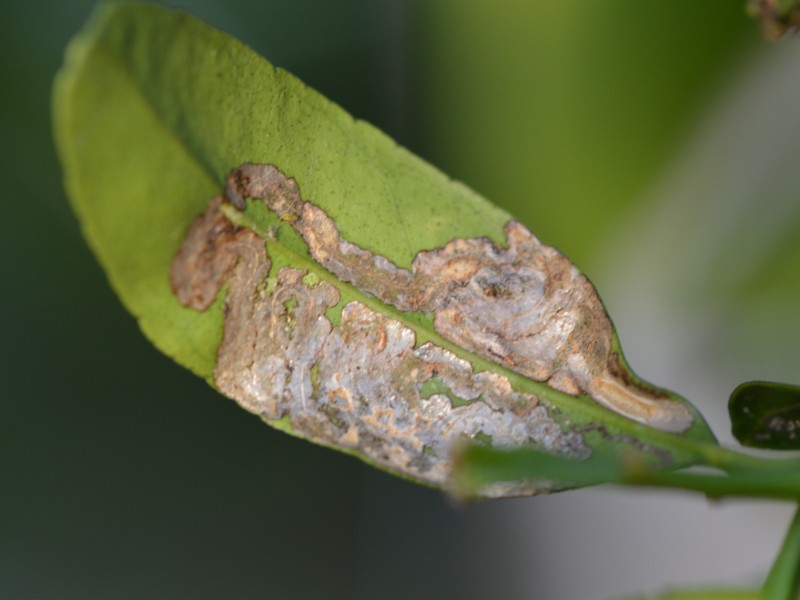
Minadores
Citrus Miner
Phyllocnistis Citrella
Pathogen:
Insect
Type:
Risk to the plant:
MILD



DESCRIPTION
WHO CAUSES IT?
The citrus leafminer, scientifically known as Phyllocnistis citrella, is a pest that affects citrus trees in many regions of the world. It is a small moth whose larvae undermine the leaves of citrus trees, causing significant damage to the health and production of the trees. Citrus leafminer larvae feed on leaf tissue, creating characteristic galleries that can weaken the plant and reduce its photosynthesis capacity.
SYMPTOMS
In citrus, citrus leafminer can cause a number of harmful symptoms. Among the most common signs are the presence of galleries or tunnels in the leaves, as well as Taches and discolorations on the leaf surface. Additionally, infested trees may show poor growth, yellowing or wilting leaves, and decreased fruit production.




TEMPERATURE AND HUMIDITY
20°C - 30°C
60% - 80%

HOW IS IT SPREAD?
Human transport, contaminated plant material, biological vectors.

HOW TO REMOVE IT?
Home remedies
There are no home treatments
Chemical treatments
• ACETAMIPRID 20% [SG] P/P
• ACETAMIPRID 20% [SL] P/V
• ACETAMIPRID 20% [SP] P/P
• AZADIRACTIN 1% (AS AZADIRACTIN A) [EC] P/V
• Azadirachtin 2.6% (AS AZADIRACTIN A) [EC] P/V
• CHLORANTRANILIPROL 20% [SC] P/V
• Phyllocnistis citrella (Pheromone)
• TEBUFENOCIDE 24% [SC] P/V
Treatments allowed in organic farming
• AZADIRACTIN 1% (AS AZADIRACTIN A) [EC] P/V
• Azadirachtin 2.6% (AS AZADIRACTIN A) [EC] P/V
• Phyllocnistis citrella (Pheromone)
Insect allies
PREDATORY MITES
LADYBUGS
LACEWINGS
PARASITIC WASPS
HOVERFLIES OR PARASITIC FLIES
PREDATORY BUGS
There are no natural allies
Mycodiplosis oidii (predatory mosquito)
EFFECTIVE PRODUCTS TO ELIMINATE THIS PEST
Sponsored link
Sponsored link
Sponsored link
Sponsored link
Sponsored link
Sponsored link
Effective against all types of fungi
To prevent and control citrus leafminer infestation on trees, it is recommended to implement a series of integrated pest management measures. This includes removing infested leaves, using pheromone traps to monitor the moth population, and applying specific insecticides when necessary.
























